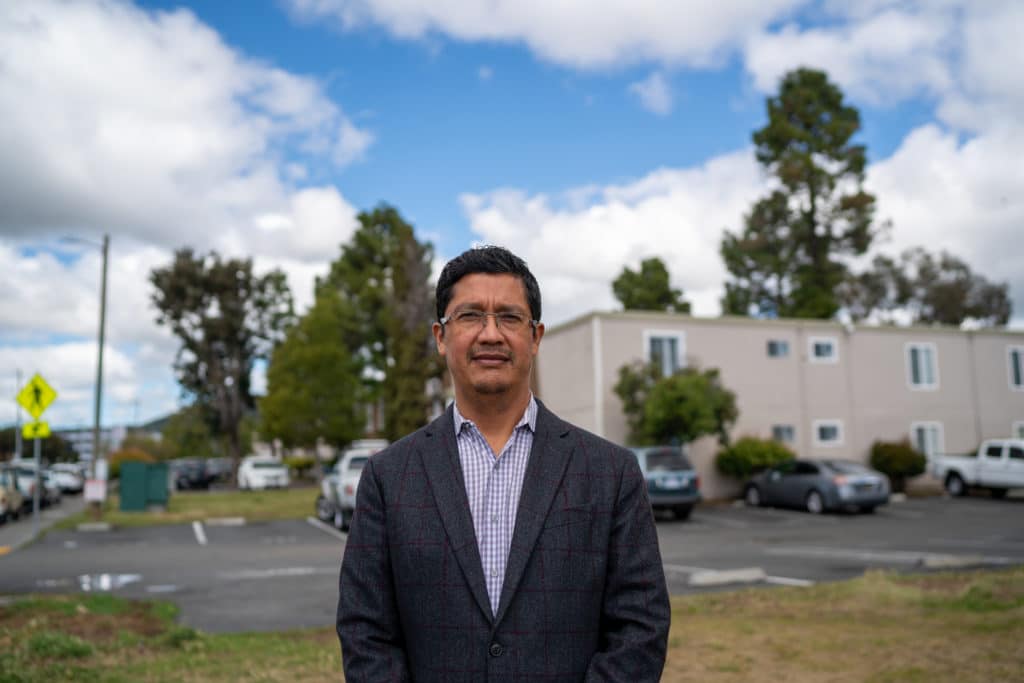CEO of Marin County’s Canal Alliance says helping Latinos overcome poverty will have a ‘transformative’ impact on society
February 28, 2023
By Kathryn Reed| North Bay Business Journal

The organization that Omar Carrera leads, Canal Alliance, helps provide Marin County’s immigrant community with language skills, education, legal advice, as well as career and social services.
But It Is housing that keeps Carrera up at night.
“The housing crisis in Marin and throughout California should keep everyone up at night, as it has wide-ranging and far-reaching effects,” the 49-year old said. “The lack of housing affordability is affecting all of us directly and indirectly, as the economy and stability of the community are weakening.
“I think the conversation about housing in Marin County is broken. It is beyond one group and one sector to fix this. We need to bring an environmental justice approach to the discussion.”
Carrera rose to the top of Canal Alliance, which operates In San Rafael with a $10 million annual budget, first by taking its English as a Second Language classes as an immigrant from Ecuador who escaped a cascading economic crisis there. In addition to nonprofit leadership, his career path Include consulting and being an entrepreneur.
The following Q&A with the Business Journal has been edited for clarity and space.
What is Canal Alliance doing about the housing issue in Marin County?
I am currently part of the J. Tommy Espinoza Fellowship offered by Raza Development Fund, a cohort of leaders across the country sharing knowledge to help solve the housing crisis.
As part of the program, we recently received a grant of $250,000 over two years, in part to support the hire of a full-time staff position to provide real estate analysis and evaluate property acquisition opportunities. Through this fellowship we also qualify for another $250,000 in enterprise grant funding, along with direct below-market rate project-level equity capital and predevelopment debt financing for eligible affordable housing developments.
This funding will support our efforts to do our part to address the housing crisis by working in two key areas: 1) converting market rate units into affordable units, and 2) building a cross-sector coalition that focuses on short- and long-term solutions.
What goals do you have for Canal Alliance in the next five years?
In 2018, we approved the 10-year vision that contains three key elements. By 2028, Canal Alliance will be:
- A leader and expert in helping Latino immigrants and their families to access the pathway out of poverty and effectively partnering with others to grow our impact in Marin and California.
- A healthy, sustainable, and innovative organization; a leading place to work in Marin with a physical space that supports its growth, culture, and role in the community.
- A leader in shifting perceptions and encouraging civic participation of the Latino immigrant community in Marin County and beyond.
Is it hard to get people to understand why your nonprofit is needed when Marin County has a reputation of being full of rich white people, even though 16% of the population is Hispanic?
It is a common misconception that Marin County is a place where poverty does not exist.
Poverty does exist, although it is often less visible than in other parts of the state or country.
The other misconception is that Marin County is all white. Latinos are a large and growing segment of the population. Latinos form the backbone of the county’s workforce and contribute to the local economy, helping drive growth and innovation in a variety of industries.
But the systemic barriers Latinos face when they try to access education, job opportunities, health care and housing are still not well understood by many people. While the pandemic has helped expose these inequities, it has also deepened them, disproportionately impacting the Latino community.
For instance, many Latino immigrants are essential workers who were unable to work from home during the pandemic. Because they had to continue working to provide necessary services to the community, they were at much higher risk of exposure to the virus.
Latino students faced challenges accessing reliable internet and technology when distance learning was implemented, and Latino families living in overcrowded apartments, often with two to three families in a single apartment, faced a much higher risk of infection.
Education and awareness have been key to engaging the broader community to help us respond to these challenges. By providing information and resources on the issues at hand and raising awareness of the challenges and needs of the Latino community, individuals and institutions contributed more than $3 million that we were able to distribute as direct cash assistance to help families buy groceries, medicine, diapers or pay the rent, when they suddenly found themselves out of work or with significantly reduced work hours.
I deeply believe that if we remove the barriers that prevent the Latino community from reaching its full potential, we will have a transformative and positive impact that will benefit everyone in the county.
Read the full story on the Northbay Business Journal